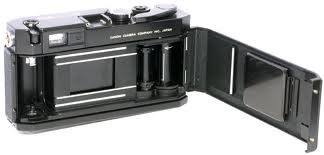Wow are there a lot of different types of Lenses! I thought I could break down some terms for you so as you grow with your camera's you will have a better understanding of each and how it applies to you!
Now... lets get started...
WIDE ANGLE LENS: Basically if you look directly ahead of yourself, and hold your arms out to the edges of your vision (without moving your eyes... that was what the film standard was considered to be 50mm. As you move your arms out wider, it was considered to be "wide angle" showing more in your image then your eye would see. This is shown in the above image as the light blue and 15mm landscape.
Now with digital these numbers may mean different things due to the different size sensors and how your lens work with those sensor sizes... I know... can't make anything easy can they!? For our purposes today tho, we are going to work off of "standards" where 50mm is what your eye sees.
TELEPHOTO LENS: If you move your arms in closer together, it is "telephoto" bringing a section of your field of view in closer to you. The closer your arms are the less field of view, but the closer things appear, and the higher number you would need to accomplish this such as the Green line above shown as a 400mm.
ZOOM LENS: Also referred to as a Variable Focal Length Lens. When you look through it, you can change the magnification. Examples: 18-55mm, 24-70mm. This doesn't mean it has a great telephoto, simply that it changes. It's a very loose term, typically applied to point and shoot camera's with a 3x or 16x "zoom".
Point and Shoot owners get to do some math to figure out what that all means - basically the higher the X (magnification) the more telephoto you have. If you want to figure out how much, simply take the wide angle number of your lens such as 38mm (a standard) and times it by your zoom number... for example: 38mm x 10x zoom = 380mm telephoto
FISHEYE LENS: A wide-angle lens that takes a hemispherical image. It produces a distorted image, convex in appearance, and covers a broad area of view by doing so. Focal lengths typically range from 16mm and lower. Examples: 8mm, 10mm.
FAST LENS: A lens that has a large aperture which allows you to take photos in low lighting without a flash. When someone is talking about "fast" lens they are talking about the "F-stop" ability of that lens, basically the maximum aperture on that lens such as: 50mm f1.4
As you will learn with Aperture settings the smaller the number of the F the more light is is able to gather, the "faster" it is. The LARGER the number the less light that can be gathered the "slower" it is.
STANDARD LENS: Also referred to as a normal lens. This would be considered to be the lens that gives you about the same perspective as normal vision. Nothing would appear any closer (or further away) than you would see it with your normal vision. This focal length will change depending on which type of camera that you use. If using a 35mm film camera, a 50mm lens would be considered as the normal or STANDARD lens, When using a digital camera, the magnification or crop factor must be considered when determining a normal lens. (Again, Standard and Normal is simply the mm number of what is equivalent on your camera to what your eye sees when you look straight ahead.)
PRIME LENS: Any lens with a fixed focal length. When you look through it, you can't change the magnification. Examples: 28mm, 50mm, 85mm, 135mm. Also referred to as a Fixed Focal Length Lens. Yes, a 50mm lens is a "standard" as well as a PRIME lens...
MACRO LENS: A lens that allows you to focus much closer to the subject (than a non-macro lens). Examples: 50mm 2.5 macro, 60mm 2.8 macro, 100mm 2.8 macro. Not all Macro lens are Prime lens, it is just as common to have a 28-70 macro, where you have to "lock in" the macro function when you want to use it. This simply is telling you that the lens has the ability to focus closer on a subject then others for the same range.
PORTRAIT LENS: A lens that gives the best perspective for taking portraits. This will vary depending on the camera that you're using. Typically you will find an 85mm prime lens, while some photographers prefer not to shoot with prime lens, and opt for something with better range like an 28-120mm. It is pretty subjective, tho most professional photographers agree staying within that 28 - 85mm range is common.
While this doesn't cover all the differences of lens types... it does give you a good overview of the different classifications of lens!
Happy Shooting!











